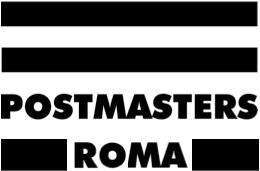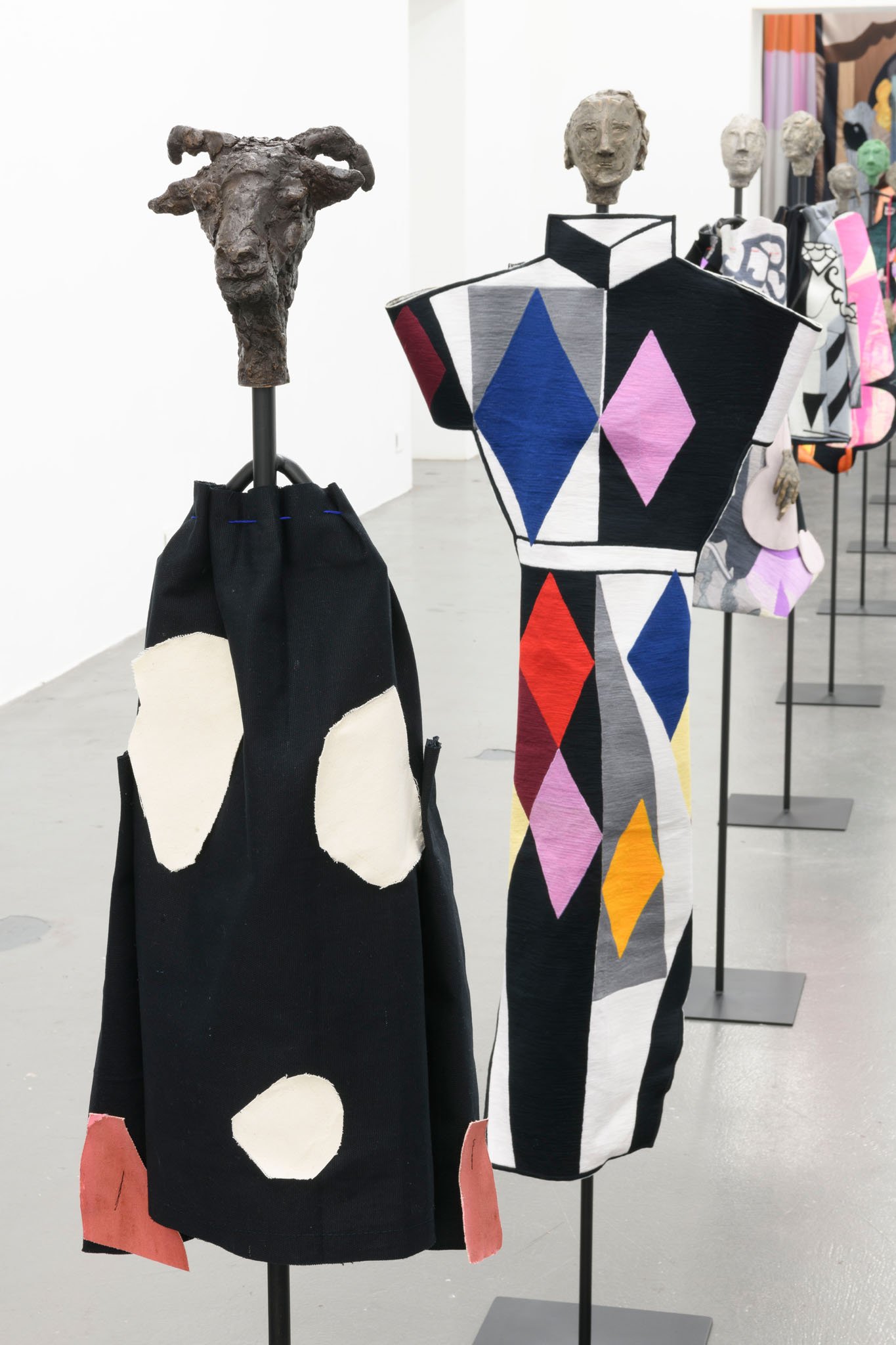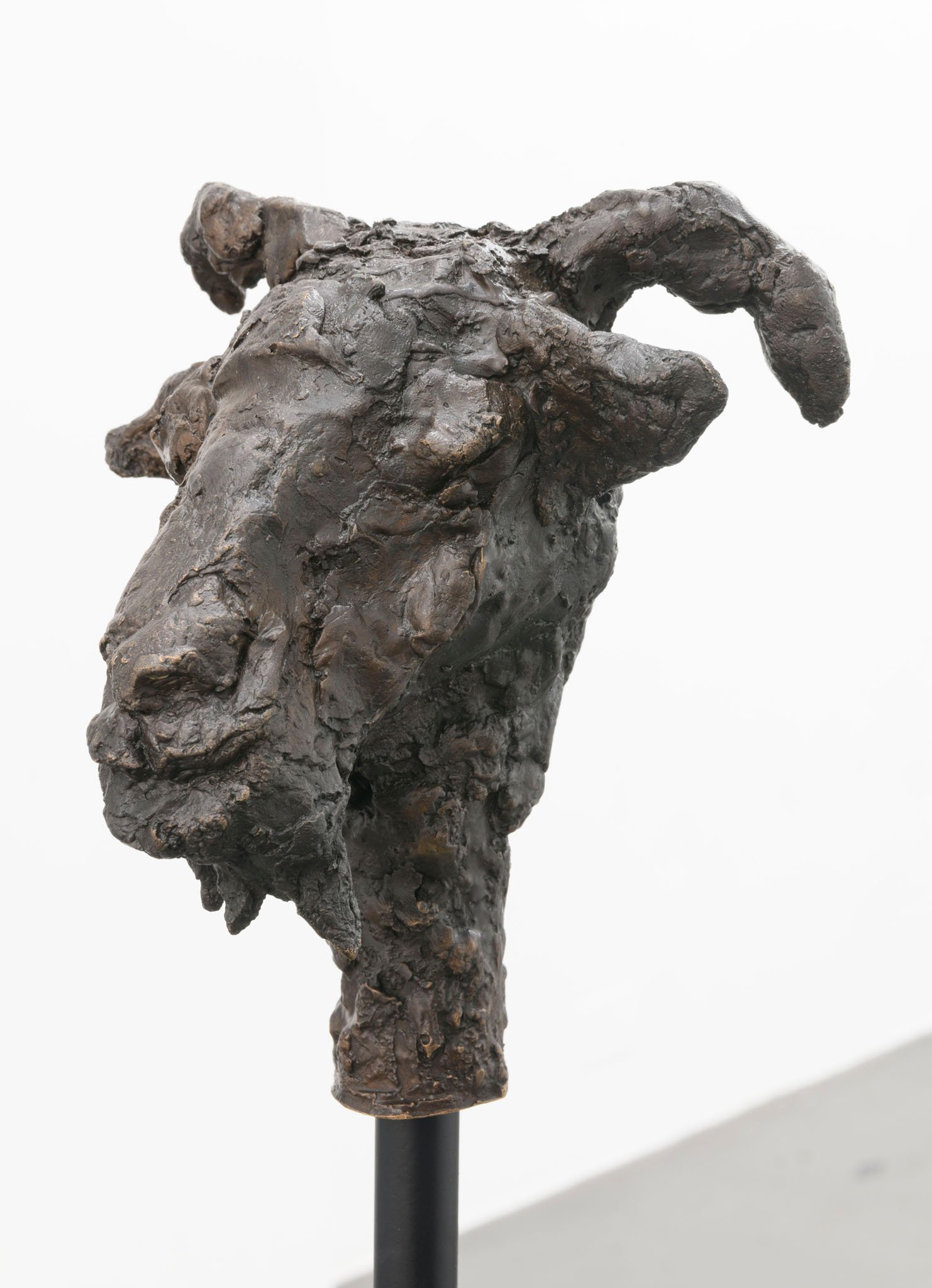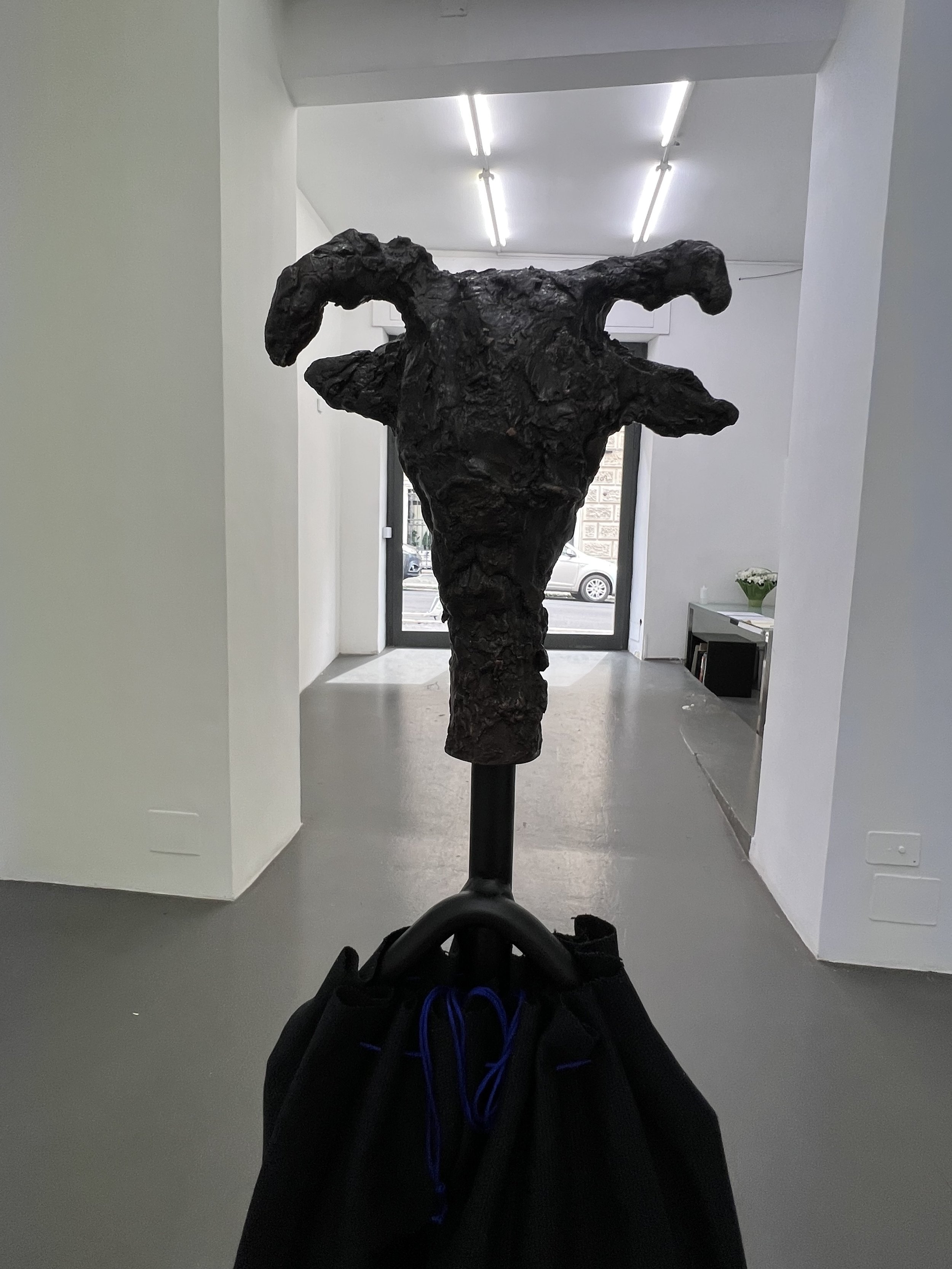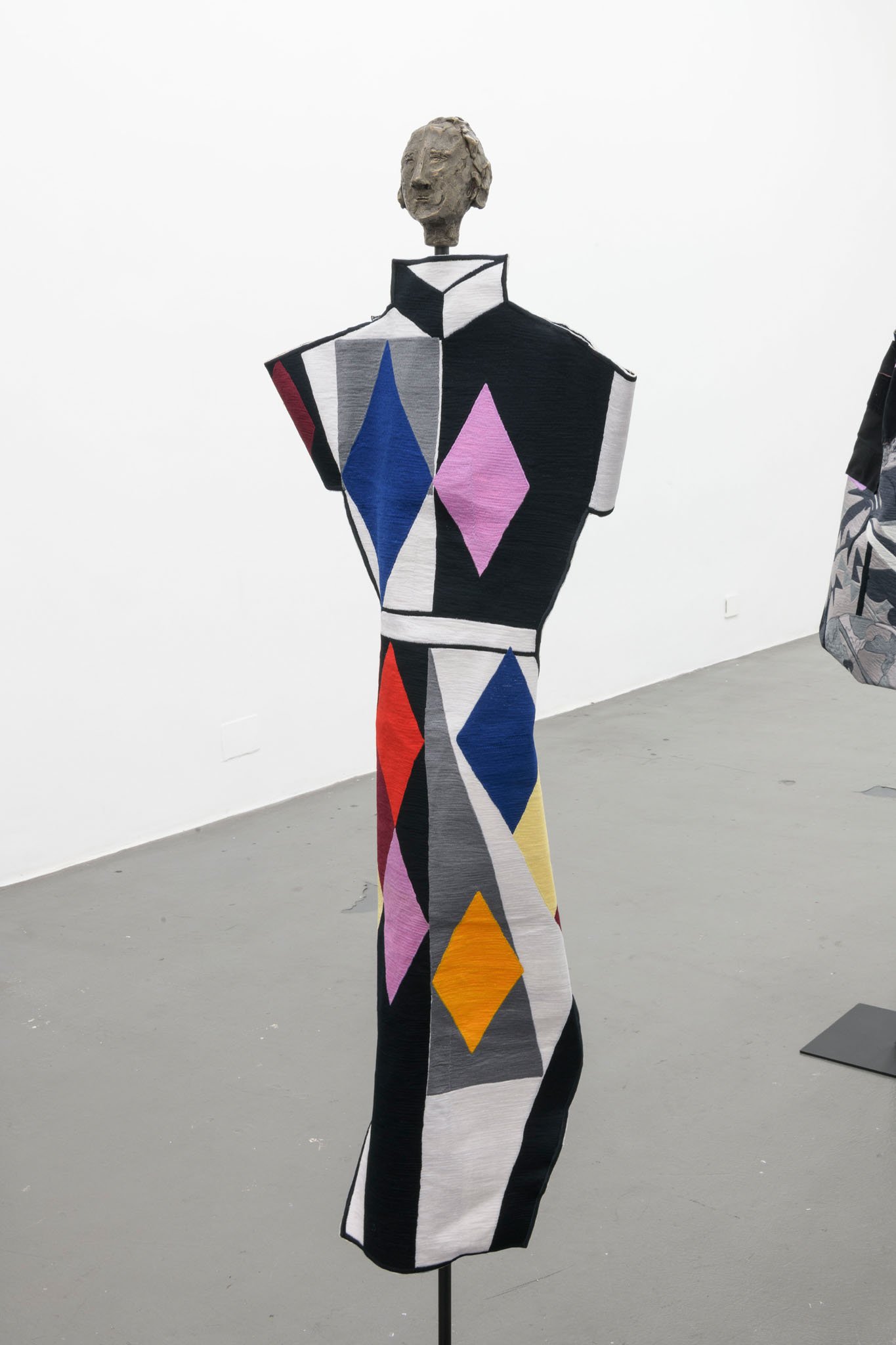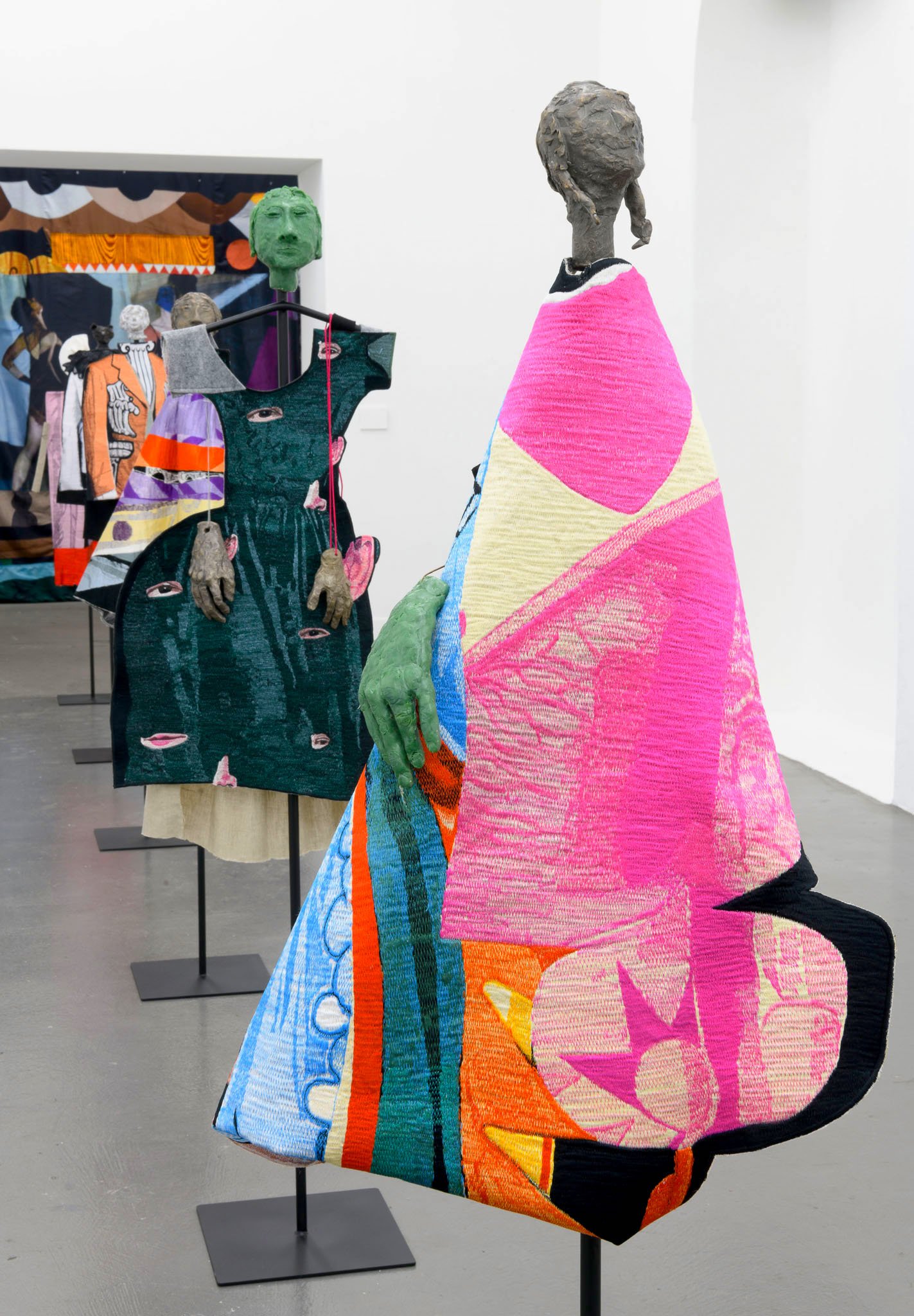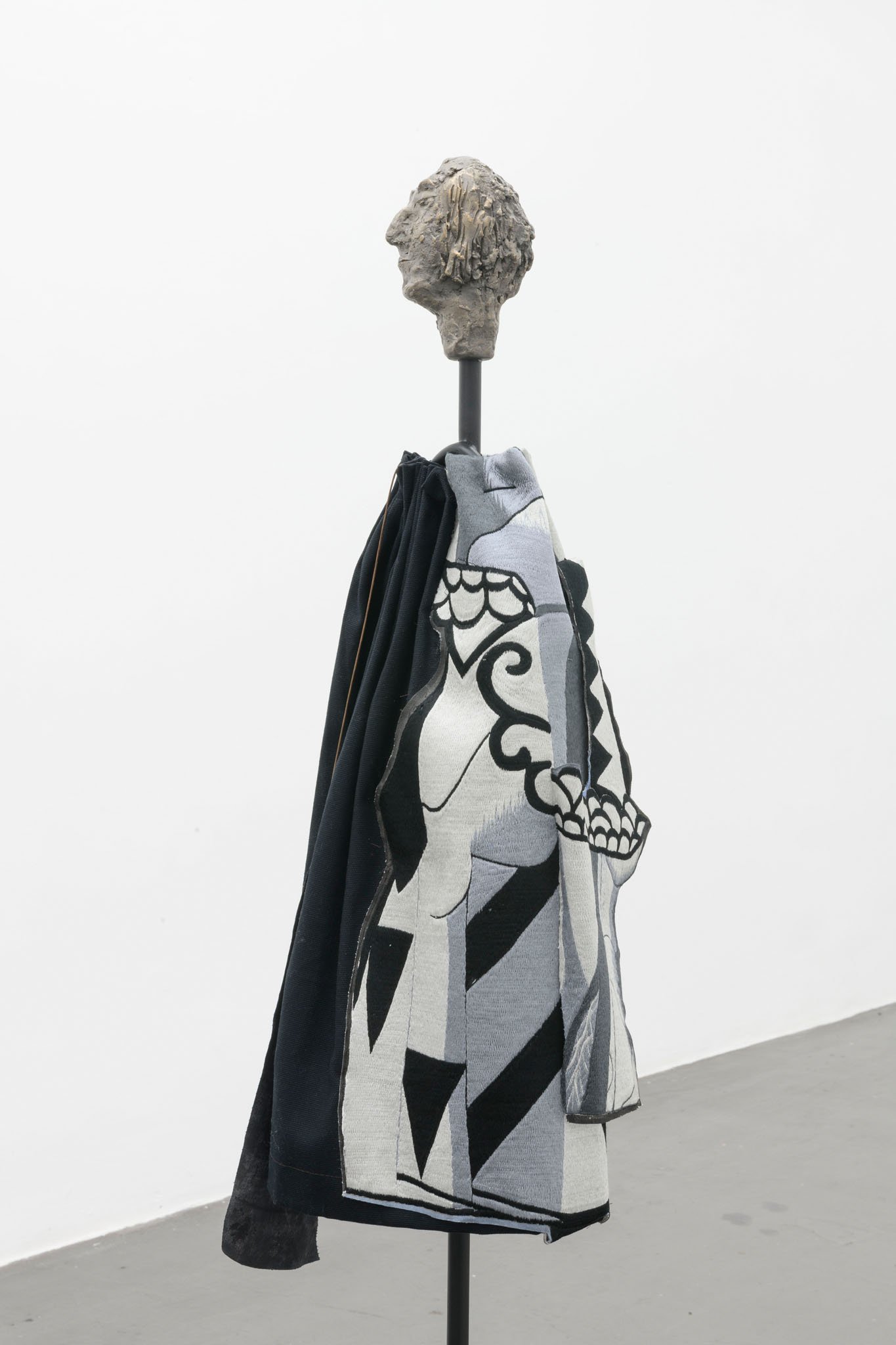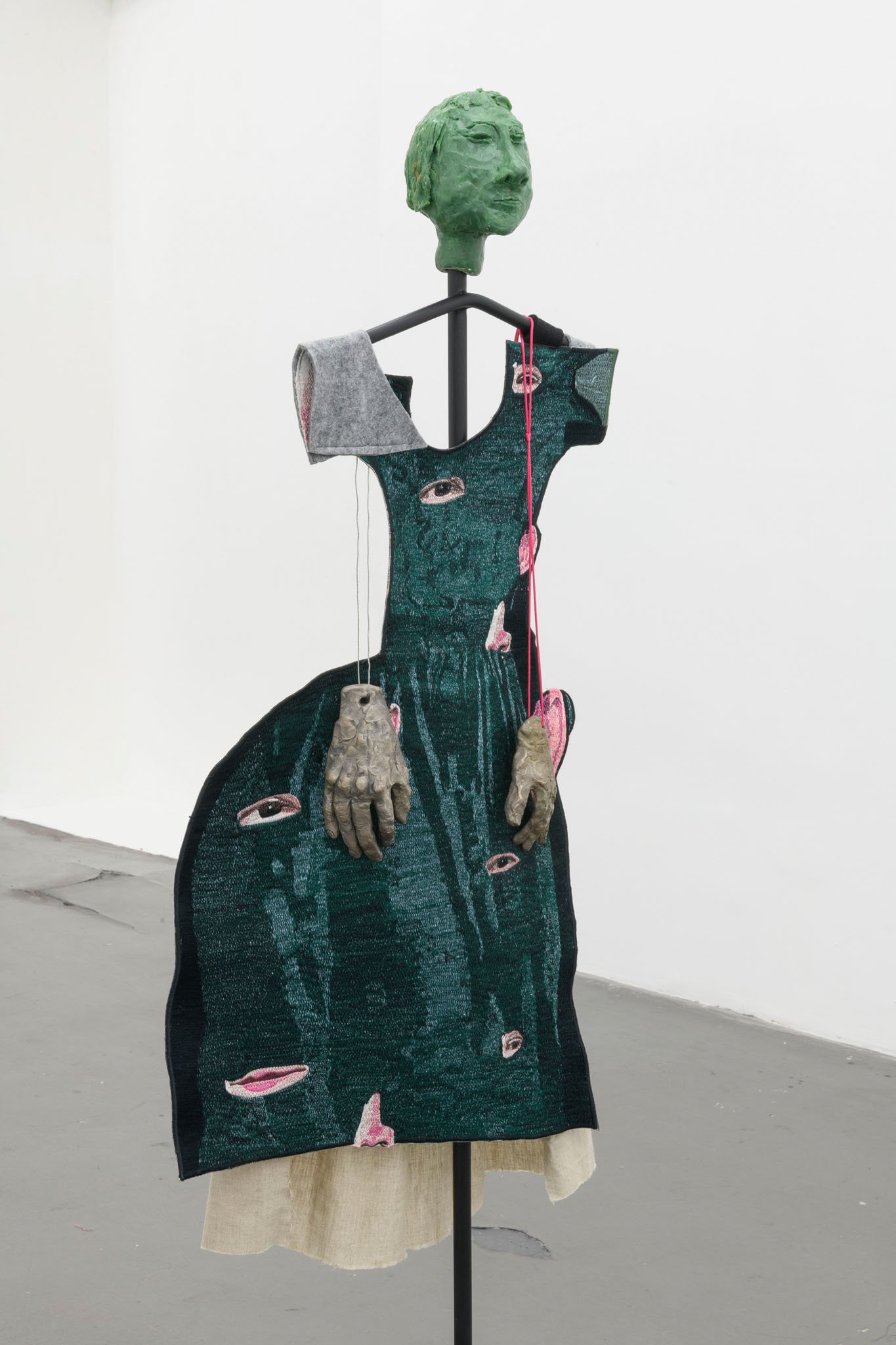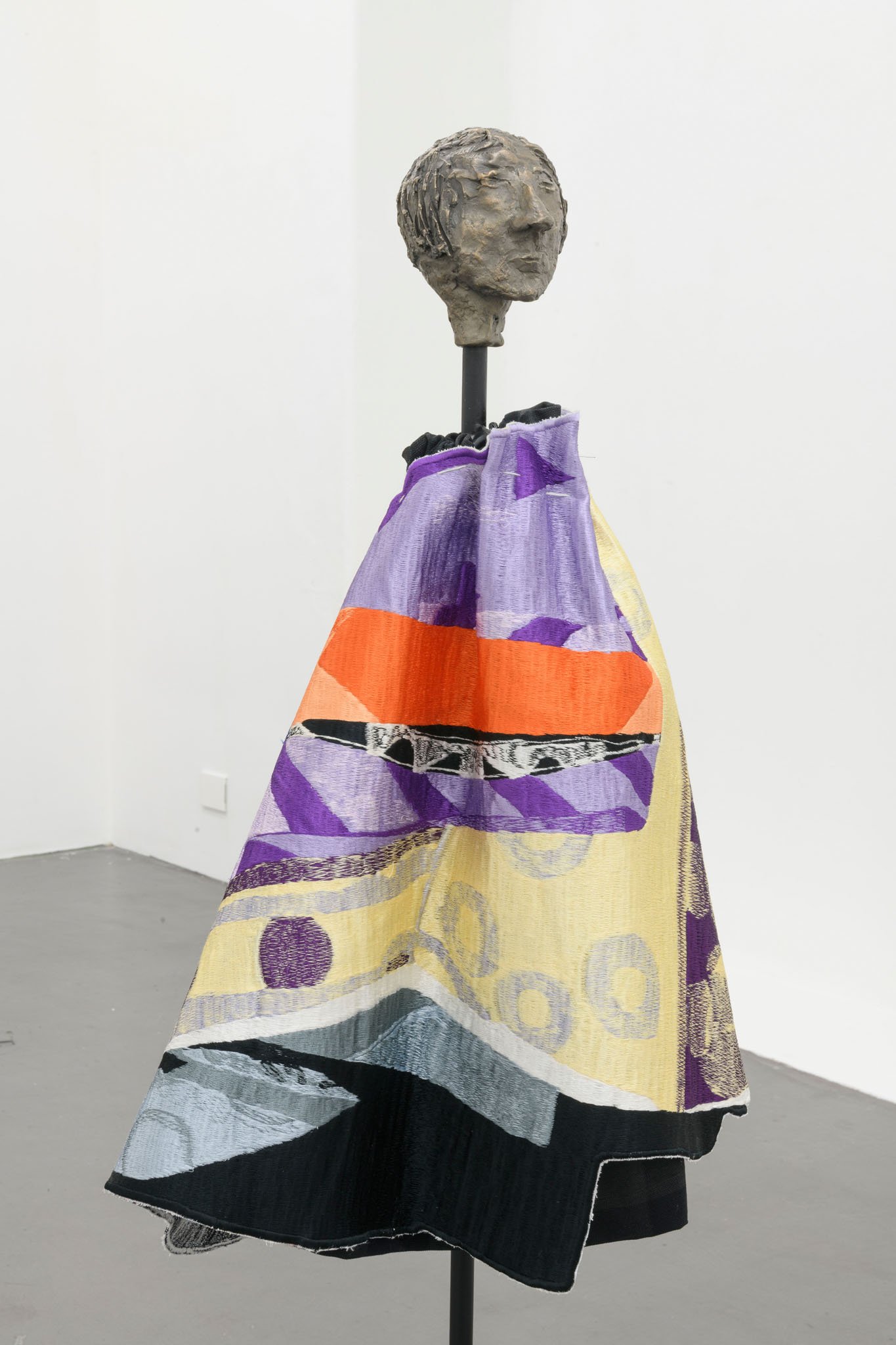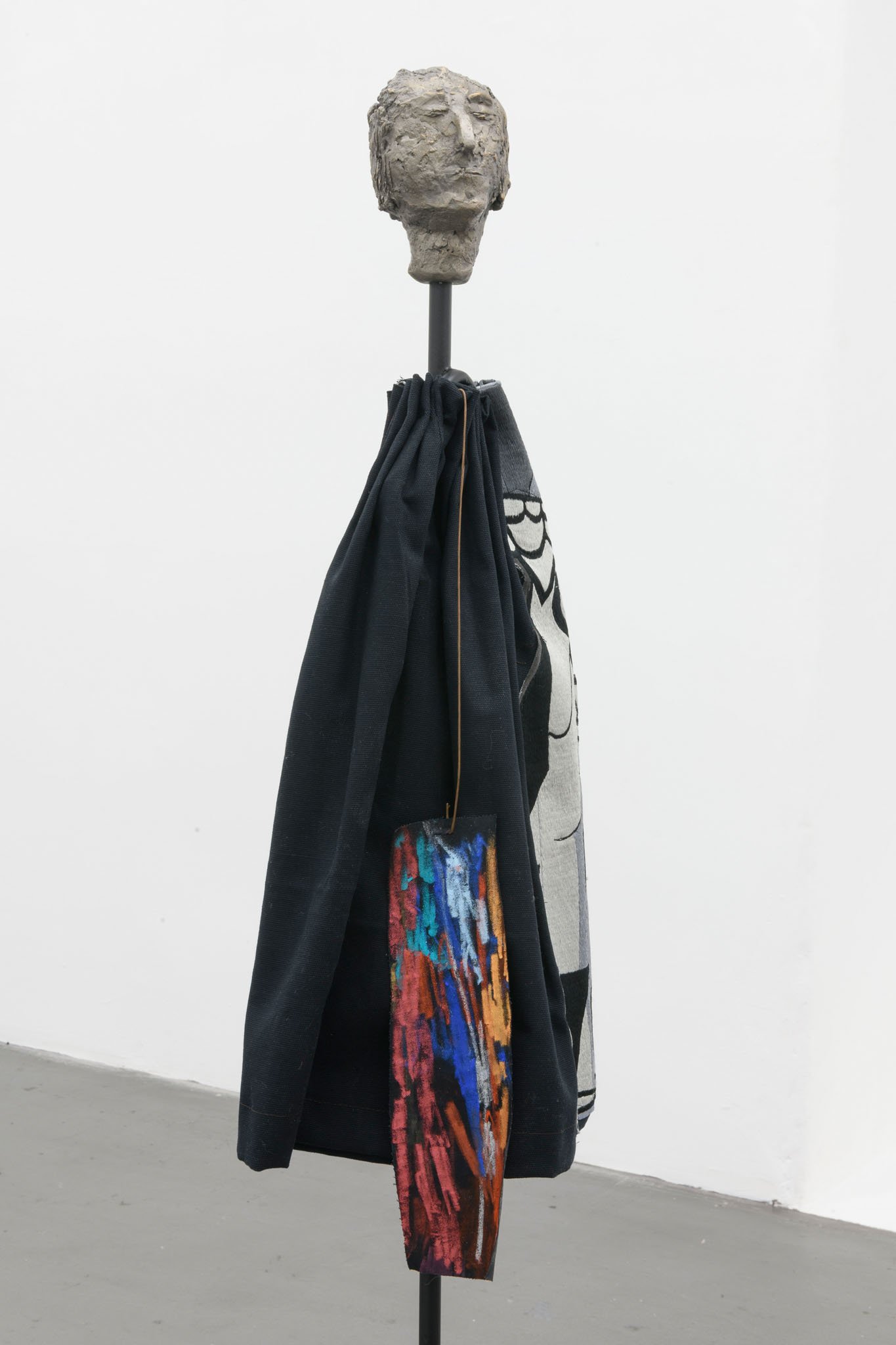SALLY SMART
The Artists Family
May 4 - June 21, 2023
PostmastersROMA is extremely pleased to present Sally Smart's second solo exhibition with the gallery in Rome and her sixth under the Postmasters Gallery umbrella.
The show, The Artists Family, dances with mythology, archetypes, psychology, art, theatre and the entangled relationships between the body, history and culture. Layered and entangled, these motifs come together in the multi-material sculptures and wall works.
Sally Smart is well known for her installations, performances and textile artworks. For our exhibition in Rome, Smart has created her own performance troupe in a form of bronze/textile sculptures and embroideries that inhabit the gallery space. The show encapsulates various points in the history of theatre, dance and performance, starting from the ancient Roman/Greek tragedy, 16th century Commedia Dell’Arte and the early 20th century Ballets Russe.
The embroideries on view are reconfigured, fragmented, and abstracted parts of the costumes of the Ballets Russes which were originally designed by Picasso, de Chirico, Delaunay, Goncharova, Larionov, and Matisse among others.
Smart's restructured textiles adorn the sculptures in the exhibition. Their heads, made out of bronze, are archetypal and mythological personages. Mother, Artist, Harlequin, Flora, Goat, Pulcinella make their contemporary appearance in The Artists Family.
The sculptures are a place of connecting and layering of materials and meanings. The costumes have their own significance, and here they shed their primary function and become an integral part of the sculpture’s subject, made in bronze. For example, The Goat's textile is based on the Faun character’s costume designed by Léon Bakst, for the Ballets Russes The Afternoon of a Faun, which was choreographed by Vaslav Nijinsky. Flora, is a Roman goddess of flowers and spring.
The larger scaled wall works also relate to Italy and Rome in particular. The brick motifs, come from ancient Roman walls and the sets of the Ballets Russes. The diamond shapes refer to the floor mosaic in Villa Massimo in Rome along with the legacies of the Commedia dell’ Arte and the Harlequin character. Pulcinella, Goat, and Daughter Architect all have connections to these performance histories as well.
Furthermore, Italy was important in the history of the Ballets Russes with several great collaborations initiating in Rome. Picasso met his wife Olga Khokhlova, dancer for the Ballet Russe, in Rome. Sergei Diaghilev and Picasso, all worked on the ballet Parade in Rome. Pulcinella came from his visit with Stravinsky to Pompei where they were first introduced to the Commedia Dell’Arte characters. De Chirico worked on the last ballet of Diaghilev for the Ballets Russe, Le Bal. It’s set design and costumes included broken fragments of classical ancient Roman architecture, which are integrated into Sally Smart’s practice as well.
PostmastersROMA è lieta di presentare la seconda mostra personale di Sally Smart con la galleria di Roma e la sua sesta con Postmasters Gallery.
La mostra, The Artists Family, danza con la mitologia, gli archetipi, la psicologia, l’arte, il teatro e le intricate relazioni che intercorrono tra corpo, storia e cultura. Stratificati e intrecciati, questi motivi si fondono e dispiegano nelle sculture polimateriche e nelle opere a parete.
Sally Smart è famosa per le sue installazioni, performance e opere tessili. Per la mostra a Roma ha creato una propria troupe performativa sotto forma di sculture in bronzo/tessuto e ricami che abitano gli spazi della galleria. L’esposizione racchiude vari momenti della storia del teatro, della danza e dello spettacolo, a partire dall’antica tragedia greco romana, alla Commedia dell'Arte del XVI secolo, fino ai Ballets Russes del primo Novecento.
I ricami in mostra sono parti riconfigurate, frammentate e astratte dei costumi dei Balletti Russi, originariamente disegnati da numerosi artisti tra i quali Picasso, de Chirico, Delaunay, Goncharova, Larionov e Matisse. Essi adornano le sculture, le cui teste realizzate in bronzo, ricordano esseri mitologici e figure ancestrali.
Le sculture diventano pertanto luogo di connessione e stratificazione di materiali e significati. I costumi si liberano dalla loro funzione primaria e divengono parte integrante del soggetto della scultura. Ad esempio, il tessuto dell’opera The Goat si ispira al costume del personaggio Faun disegnato da Léon Bakst e coreografato da Vaslav Nijinsky in “Il pomeriggio di un fauno” per i Ballets Russes.
I lavori a parete rimandano all'Italia e a Roma in particolare. Il motivo dei mattoni proviene dalle antiche mura romane e dalle scenografie dei Balletti Russi mentre i rombi richiamano il mosaico pavimentale di Villa Massimo a Roma e al personaggio di Arlecchino nella Commedia dell’Arte.
Infine possiamo ricordare che Picasso ha incontrato sua moglie Olga Khokhlova, ballerina dei Balletti Russi, proprio a Roma e nel 1917 sempre Picasso era in Italia con Sergei Diaghilev e Cocteau per preparare scene e costumi per l’opera Parade. De Chirico ha lavorato all'ultimo balletto di Diaghilev per i Ballets Russes, Le Bal, la cui scenografia e i cui costumi includevano frammenti dell’architettura romana che ritroviamo anche oggi nel lavoro di Sally Smart.
